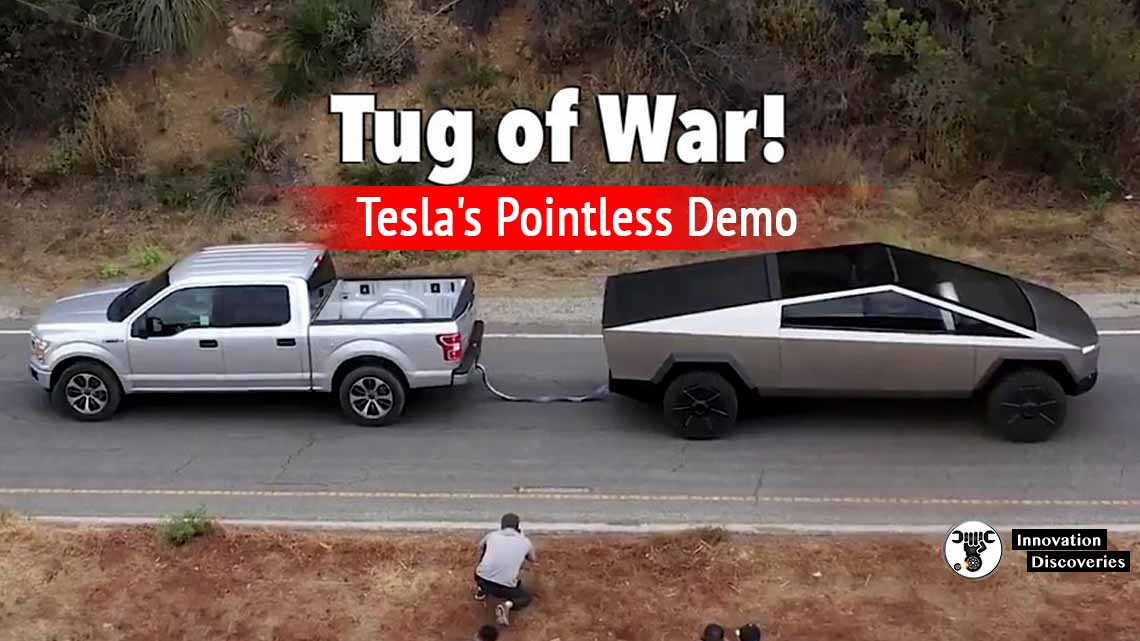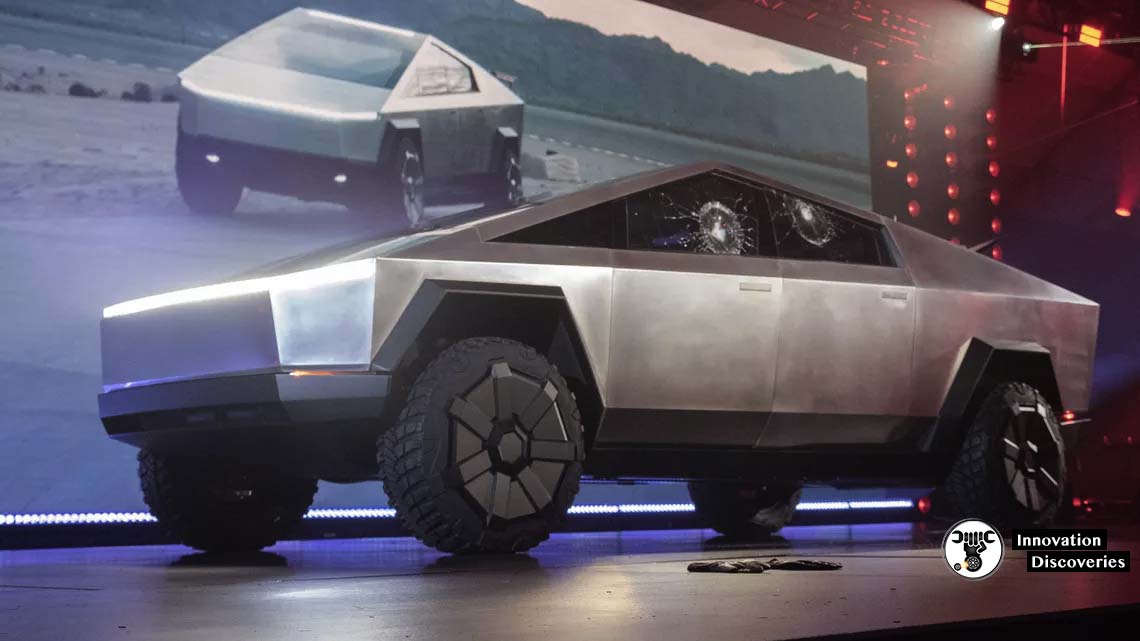Tesla Cybertruck and other electric vehicles, in general,
Are bad at towing heavy loads,
Suggests a new video from Engineering Explained.
Jason Fenske, who runs a YouTube channel,
Is an ardent supporter of electric vehicles and he owns a
Tesla Model 3 Performance.
In his latest video,
He breaks down the math of why electric vehicles have a
Hard time towing heavy loads for a long distance.
In his video, he explained that the main enemy of electric cars,
Like the Tesla Cybertruck, in this case,
Are smaller battery packs and less energy density.
Electric vehicles are great at towing heavy payload and can do,
So in a better way than conventional vehicles.
In his video, Jason explains using a bunch of calculations to prove his point,
Which is ultimately right, but he misses one conclusion from his video.
Take a look at Jason’s video to find out more.
Is Tesla Cybertruck Bad At Towing?
As you can see in the video,
Jason performs a bunch of calculations by taking into account
All the forces acting on the electric vehicles when they tow a trailer.
He took the example of the Tesla Model X P100D with a 100 kWh battery and
The Tesla Cybertruck, whose battery he assumed to be around 200 kWh.
“So as far as daily driving electric cars today, they’re doing just fine.
The problem comes when they’re towing something,” said Jason.
All of his calculations only focused on one equation that says:
‘Energy = Force X Distance.’
”The only thing we’re interested in here is how much energy is required to
Move around this electric vehicle and how much energy do we have, ” Jason explained.
He begins his calculation by explaining how a
Tesla Model X is highly efficient compared to a Ford F-150,
But with a 36-gallon gas tank option,
The former simply have access to more energy at hand.
The Model X has 100 kWh of energy in its battery pack,
While the Cybertruck with its assumed 200 kWh battery can deliver 500 mils of range. On the other hand, 1 gallon (3.79 l) of gasoline has 33.7 kWh of energy,
Meaning a Ford F-150 with a 25-gallon tank either has 775 kWh of energy or
1200 kWh worth of energy with a 36-gallon tank option.
However,
What makes all the difference is how efficiently these vehicles use this energy.
The Tesla Model X with its 100 kWh battery pack delivers 328 miles (ca. 528 km) of range,
Which is equivalent to more than 1000 MPGe.
On the other hand,
If we go with the official mileage figure of 19MPGe of the Ford F-150,
We’ll get a total range of 437 miles (ca. 703 km) with the 25-gallon gas tank version and ” 684 miles (ca. 1,101 km) with the 36-gallon fuel tank.
“Well, our Cybertruck,
With about a fourth of the energy of the Ford F-150 can travel further,
That’s insanely efficient,” commented Jason.
Jason then put both the electric vehicles to the test by adding some weight behind them in the form of a trailer.
For the Model X, the trailer weighed about 5,000 pounds (2.27 t) with an additional 500 pounds (0.23 t) of load in the car’s boot.
For the Tesla Cybertruck, he assigned a 6,000-pound trailer for it to tow along with an additional 500 pounds (0.23 t) of luggage.
He then assumed three acting forces on both the vehicles,
Namely, aerodynamic drag, rolling resistance and the acting force of gravity while going up a hill.
After a bunch of calculations the result, for the Model X, came out to be not so positive. To maintain a constant speed of 75 miles (ca. 121 km) per hour,
While carrying the load over a distance of 100 miles (ca. 161 km),
The Model X would need 100.4 kWh of energy, which is more than its battery pack.
However, if we reduced the speed down to 60 mph (ca. 97 km/h),
The energy requirement would go down to 84 kWh.
Lastly, if we removed any sort of additional weight from the car and then went up the hill,
The resultant energy consumed would be 51.3 kWh.
Jason’s results are almost accurate to real-world testing,
I know this because recently,
Another YouTube channel tested the Model X with a Trailer in real-life conditions.
The test was done by ‘The Fast Lane Truck’; they tied a 4,400-pound
Trailer with the Model X and drove it on a highway loop.
1 mile (1.61 km)hey found out that the Model X was consuming 922wh/mile and
Delivering 1 mile (ca. 1,609 m) of range with every 1% battery c1 mile (1.61 km) It seems like a super high consumption rate,
But convert the same figure to MPGe and you’ll realize that the car is delivering 40MPGe,
Which the Ford F-150 can’t deliver even while being unladen.
Conclusion
The conclusion that Jason and I both arrived at is that electric vehicles are,
Highly efficient and deliver more MPG than conventional ICE vehicles in all situations.
They have a large storage of energy,
So they’re able to travel further
Without caring about efficiency.
What I’d also like to additionally conclude here is that even
With a smaller battery pack, electric vehicles are most cost-effective to run in the long term.
Also,
I don’t necessarily agree with the calculated laden range of the
Tesla Cybertruck because we only know its range.
We don’t know its battery chemistry or the energy density of the cells in its battery pack,
Thus predicting its real laden battery range is not possible at the moment.
Also, read –
Is this a Tesla Cybertruck killer?
Tesla Cybertruck Tug-Of-War Vs. Ford F-150 Was Completely Pointless




